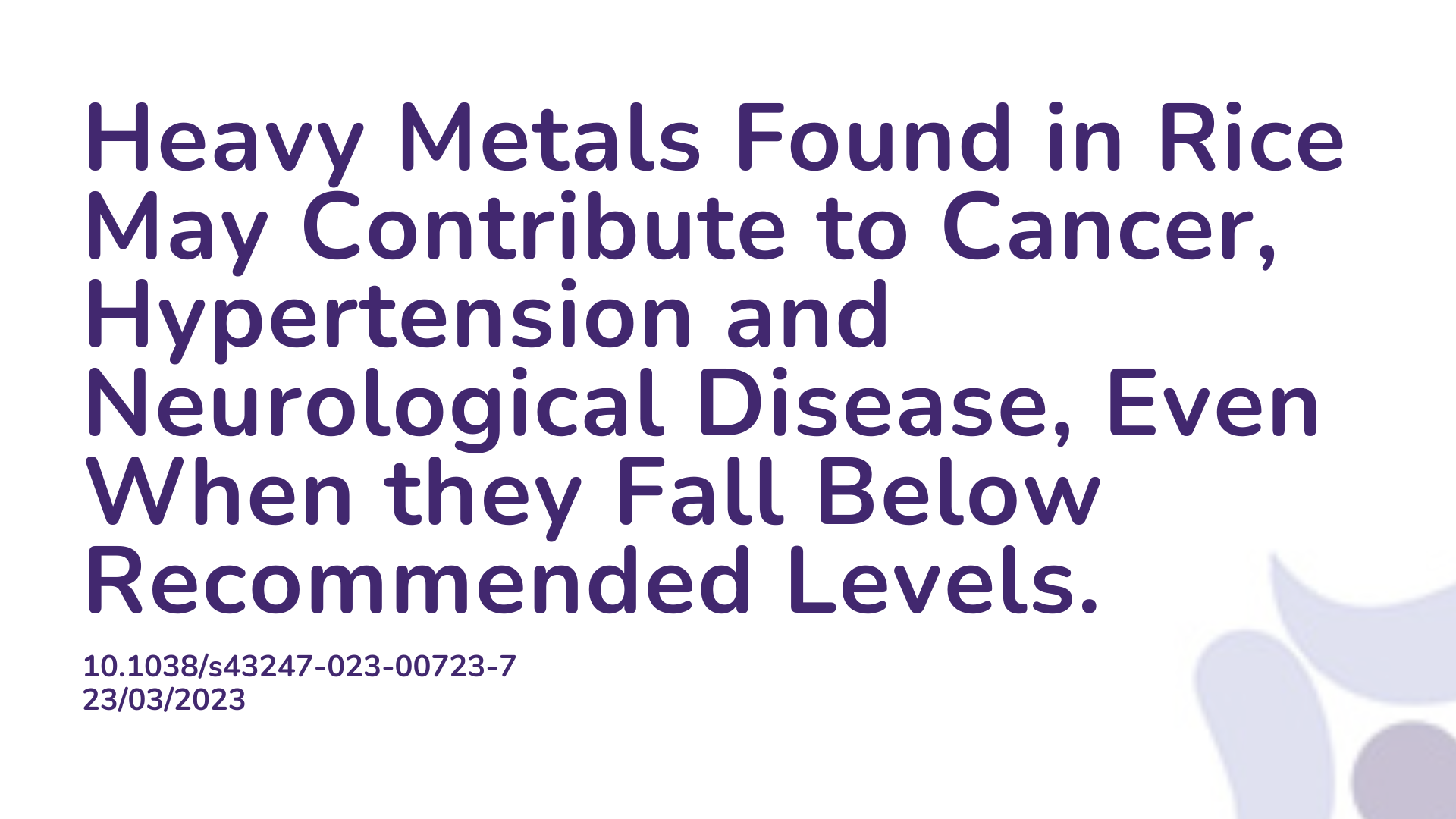Summary:
Rice crops are very vulnerable to pollution and the heavy metal accumulation can be up to three times more than other common grains such as wheat. Heavy metal accumulation can have potentially toxic effects and be a significant health hazard to humans. Food and safety organisations have set maximum amounts of rice that should be consumed due to risk of heavy metal toxicity. However, some studies have shown that heavy metal concentrations below the recognised toxicity amount can still result in health risks including neurological disorders, cancer, and hypertension. This study looked at the levels of heavy metals present in rice in 32 provinces of China and found levels of cadmium, arsenic, mercury, lead, and chromium. The study then looked at the health impacts of these pollutants and found that consuming rice long term that contains these elements, yet is still under the levels stated in the national guidelines, can cause health risks. Health risks were particularly apparent for toddlers and young children and arsenic and cadmium were found to be the most impactful.
Abstract:
Long-term consumption of rice containing heavy metal(loid)s poses significant risks to public health, which can be scientifically evaluated through food safety assessment. However, spatial variability and uncertainty in exposure parameters are generally neglected in existing food safety assessment standards. This study focused on rice consumption in 32 provinces of China, and extracted 3376 data points of five heavy metal(loid)s (cadmium, arsenic, mercury, lead, and chromium) and two nutrient elements (copper and zinc) from 408 articles. Probability and fuzzy methods were integrated to cope with the spatial variability or uncertainty and more accurately evaluate the risk. The results demonstrated that long-term consumption of rice that meets the national food safety standards still can cause non-negligible health risks, particularly for children and toddlers with chronical exposure. Arsenic and Cd were found to be the most critical elements, which contribute to 64.57% and 22.38% of the overall human health risk, respectively. Fuzzy assessment indicated that the score in northern China is approximately eight folds of that in southern China, indicating that northern rice has lower risks and better nutrition. Our results demonstrate that the food safety standards need to be tailored according to local conditions with more specific receptor parameters and risk acceptance.
Article Publication Date: 23/03/2023
DOI: 10.1038/s43247-023-00723-7



